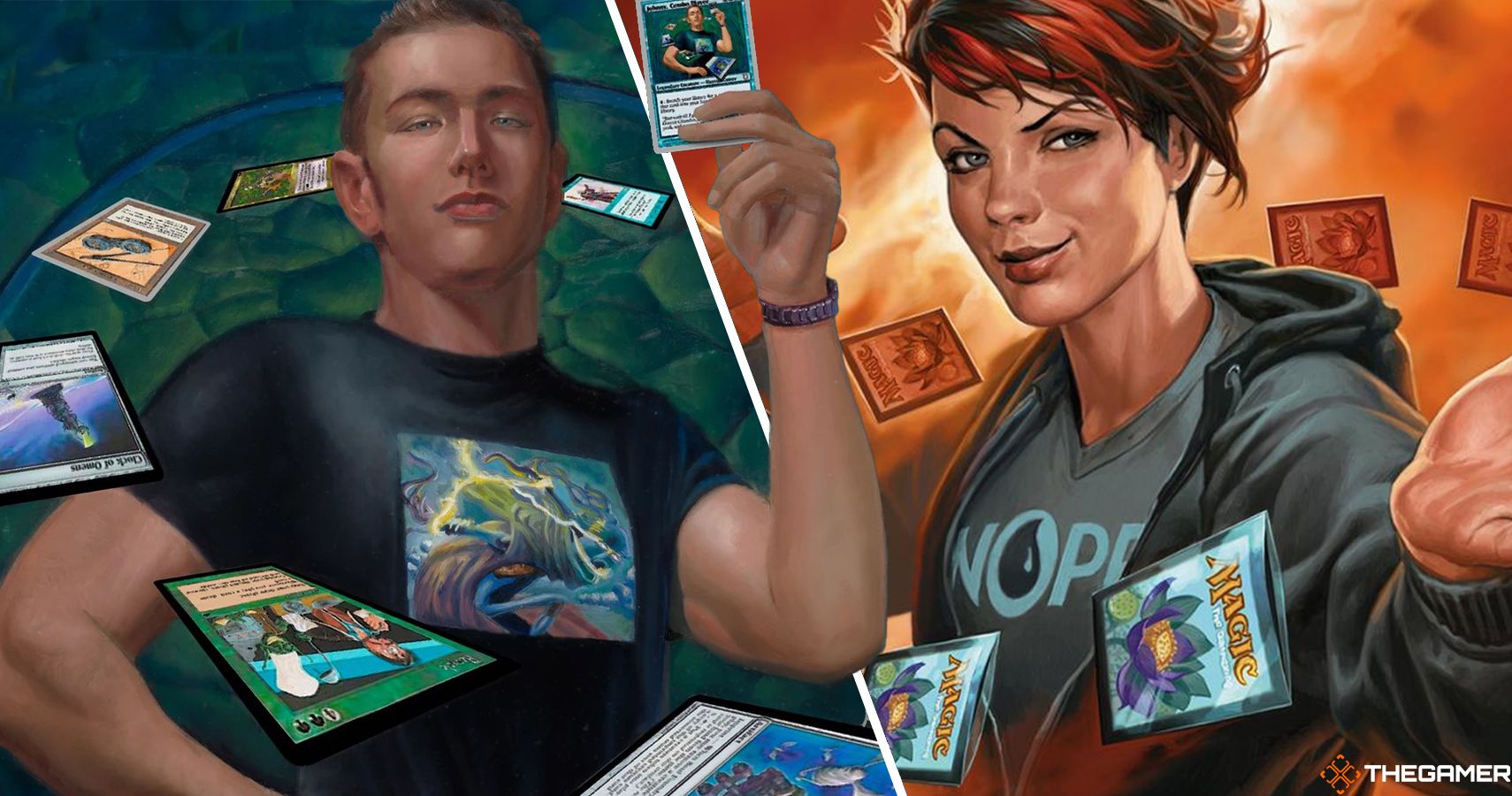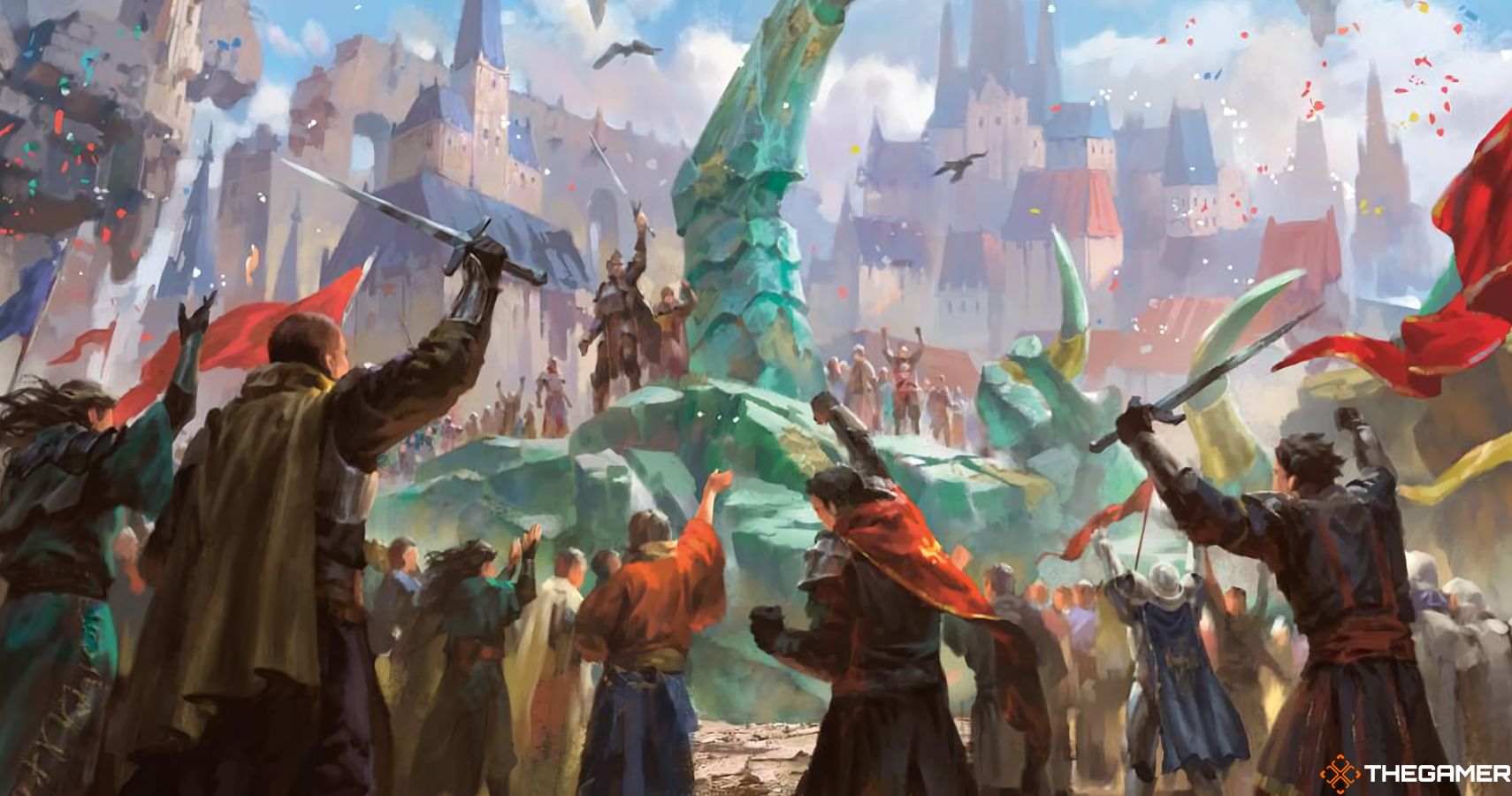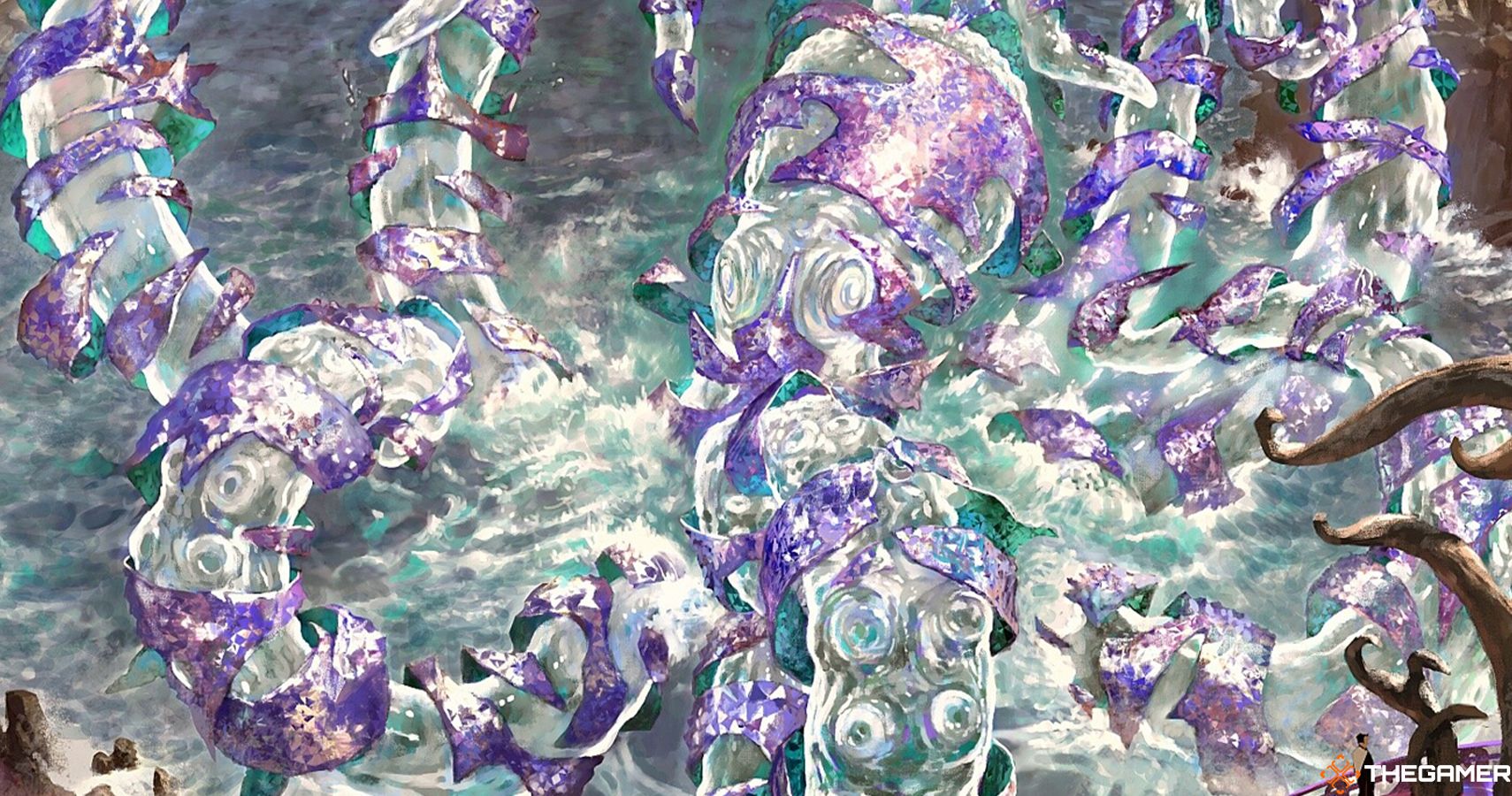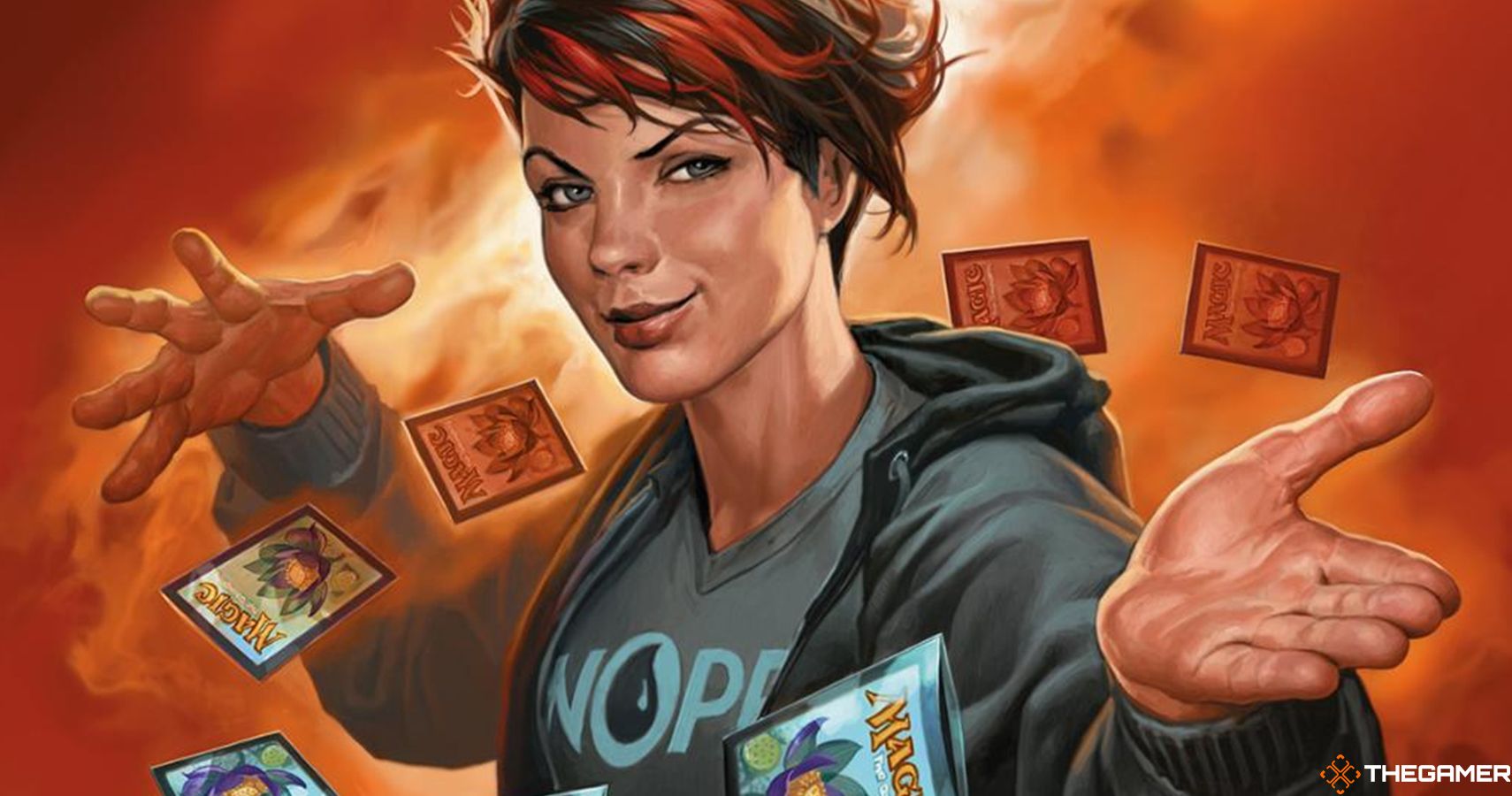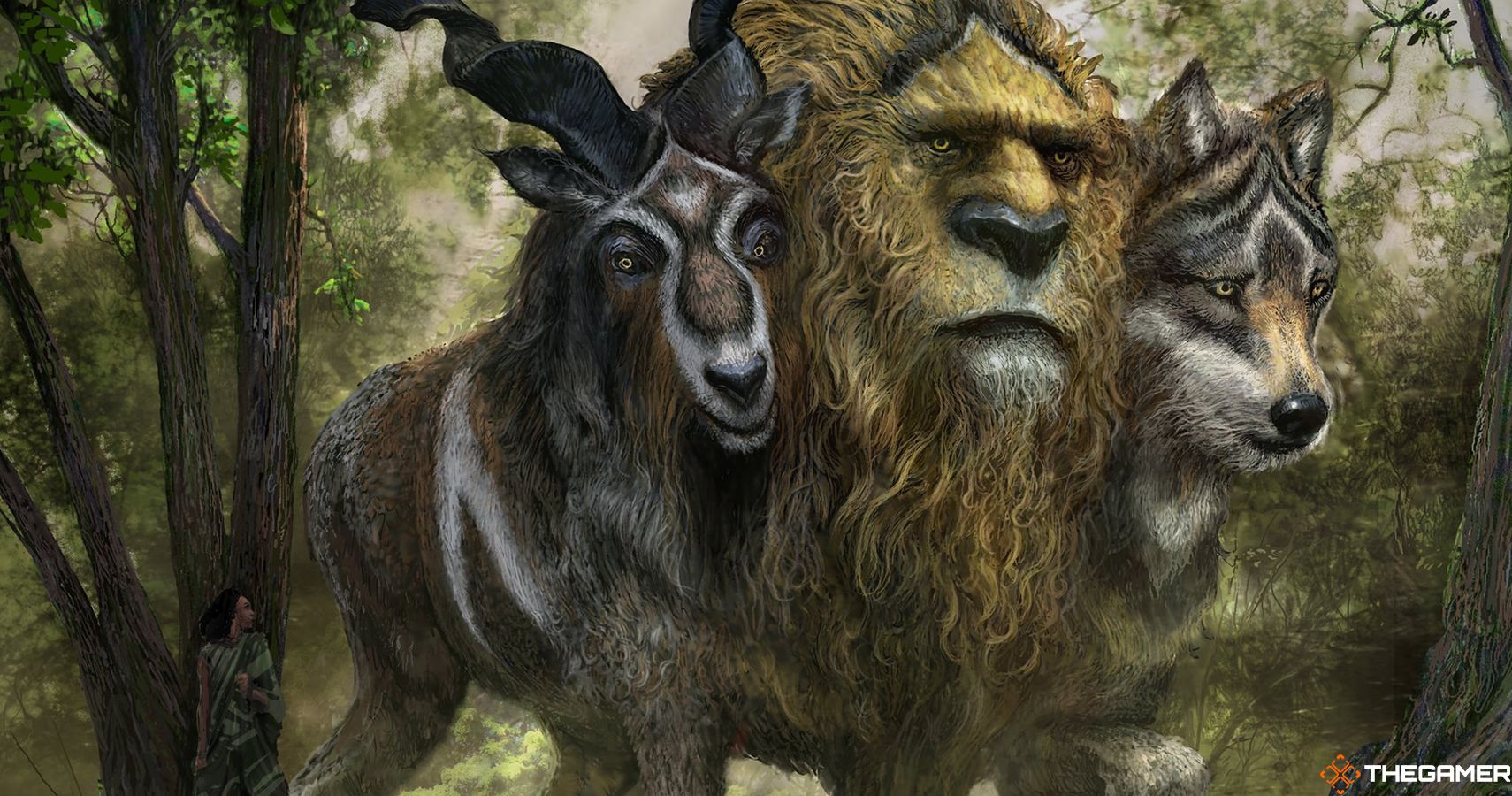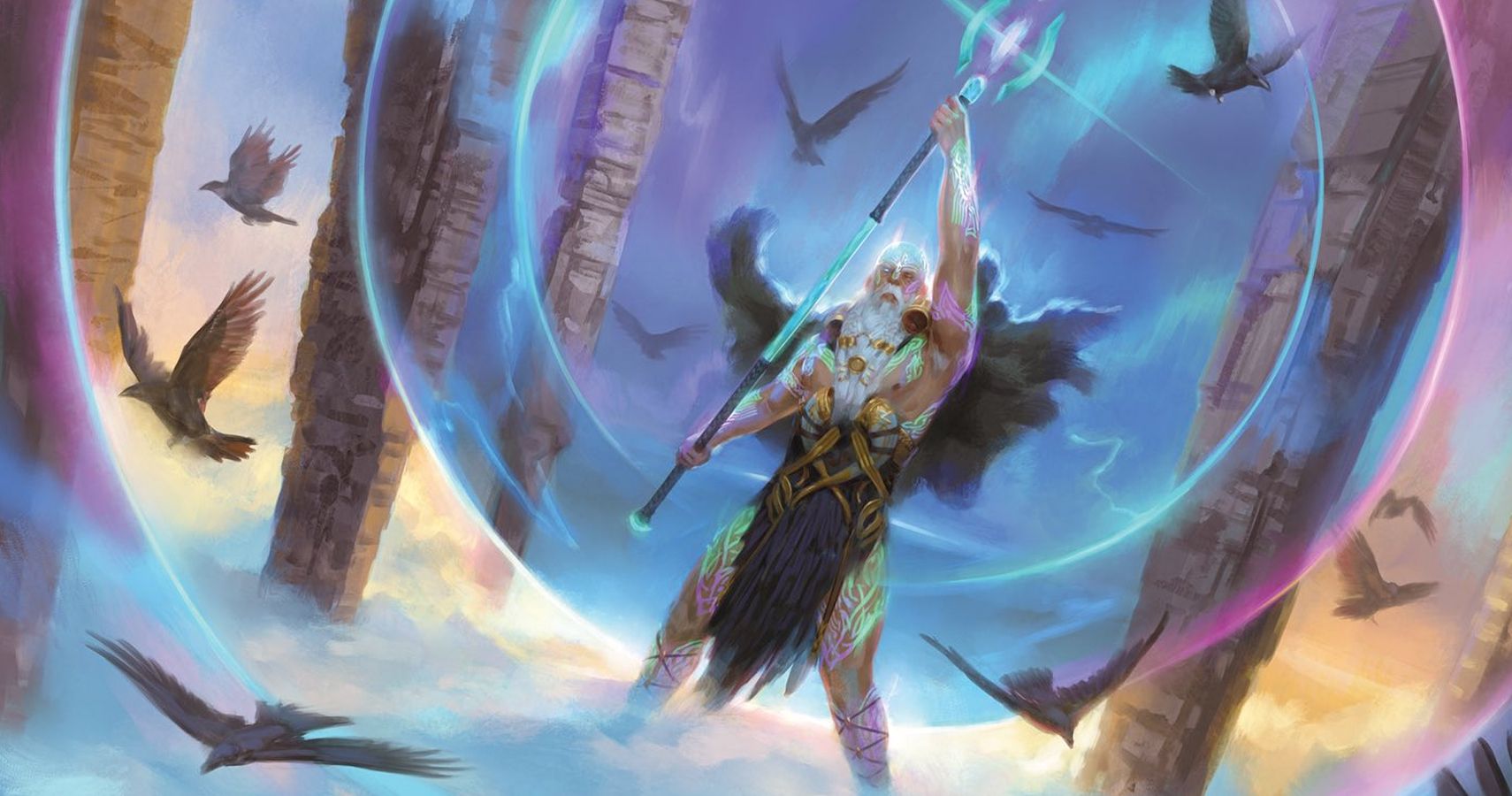Magic the Gathering has a lot of slang. Knowing your bolts from your Selesnyas is important, but some of the weirdest slang out there describes the players themselves.
These are the player types, different terms Wizards of the Coast uses to describe what a player gets out of the game, and how they actually play it. By identifying these demographics, it can make sure every set has at least something that appeals to them. But what are the player types, and how do you know which one you are?
Note that player types and aesthetic types are ancient, with them first codified in 2002 by Magic's head designer Mark Rosewater. As a result, some of the names are weirdly gendered, even after attempts in later years to update them to be more inclusive.
Aesthetic Profiles
Players can be roughly split along two axes: aesthetic profiles and player types. Aesthetic profiles are more about what excites a player in a game of Magic, rather than necessarily how they act in it, and it can be split into two camps, Vorthos and Mel.
Vorthos
Vorthos players care a lot about the story and world of Magic. They may read the ongoing story, know who the characters are, and be more excited for a setting or theme over a mechanic.
To a Vorthos player, cards that show key moments or have callbacks to older stories are what makes Magic great. For example, a card like Ikoria's Blade Banish is exciting to a Vorthos because it features a cameo appearance from the Wanderer, a mysterious Planeswalker who we were introduced to in War of the Spark. Or they may enjoy cards like Ruxa, Patient Professor because of the art's reference to the Muraganda Petroglyphs.
Magic has a huge amount of lore and storytelling that can pass by most players without much fanfare, but a Vorthos player notices and appreciates the interconnectedness of each set. Predicting where the story is going and imagining the potential of the multiverse are what make Magic great.
Mel
On the other hand, Mel players are excited by the mechanical potential of the cards. They see Magic as a game first and a story second, and will scour through decklists and card reveals to see what's coming in each new set.
It's important not to confuse a mechanics-focused player with a competitive, victory-focused player (which we'll get to). While powerful cards with lots of potential will appeal to many Mel players, anything new, quirky, or cleverly worded will also stand out.
Take a card like Octavia, Living Thesis. It's a cool card, but it also- an Octopus that has eight syllables in its name, eight lines in its card text, is an 8/8, has exactly eight "8" digits on it, has ward eight, costs eight less to cast if you have eight or more instants and sorceries in your graveyard, and has a starting generic mana cost of eight. It's an example of Wizards getting creative with the mechanics of the game as much as it does the art of flavour, and that's the kind of thing a Mel player can love just as much as a powerful new combo piece.
Mels also like to think about the underlying facets of card design, like the colour pie that decides which mechanics can appear most frequently in which colours or the intricacies of the rules themselves. Most players know the basics, but a Mel player will take greater interest in the edge cases and footnotes of the comprehensive rules.
Player Types
The other axis on which players are categorised is the player type. While aesthetic profiles focus on what appeals to the player from a product perspective, player types care about what they actively do in each game they play.
Spikes
Spike players want to win, and will do so by building powerful decks and following the metagame. They take joy in defeating other players and proving they know the game better, even if it means sacrificing some of their deck's creativity in exchange for raw efficiency.
Spikes will often keep abreast of the game and like to try and assess the power of new cards as they come out, and then use those cards to fine-tune their decks when they come out. They're also less likely to have 'pet cards', and will be happy to chuck out long-standing cards in their deck if something else better gives them an advantage.
It's crucial to remember that Spike doesn't mean "aggressive" or "toxic". A lot of the competitive scene could be described as Spikes while also pillars of the community and as having good player conduct. These player types aren't judgments on someone's moral character; it's just about how they like to play the game.
Timmy/Tammy
Timmy and Tammy players love big, meaty plays. Casting big spells and big creatures is the main goal for this kind of player. Though they do like to win with decisive, overwhelming victories, they don't care as much about the winning as a Spike does; they just want to have a presence in the game.
As head designer Mark Rosewater notes, Timmy players tend to be younger or newer to the game. This is likely because one of the first metrics for a card's usefulness we learn is power and toughness, and we quickly connect a high mana cost and a big effect. But it isn't exclusively younger or newer players that enjoy this, as seen by the popularity of 'Stompy' decks that use lots of big creatures.
Another key feature of a Timmy player is that they're often more social than other player types (and therefore might be more drawn towards the Commander format, which is slightly slower and more social than competitive, one-on-one formats). They like to make memorable game moments with other players, remembering that time they got an Ironscale Hydra on the board and made it super big, or love to throw a Honey Mammoth into every deck they can.
Johnny/Jenny
The last player focuses on creativity and self-expression. Winning is good to a Johnny/Jenny player, but winning with a deck you built from scratch is even better. Net-decking (copying a decklist online) is the antithesis of everything this kind of player enjoys.
More than just brewing a deck, Johnny and Jenny players like the challenge of building around suboptimal or niche cards. Finding new combos and synergies, discovering cards they've never seen before, and putting them together in creative ways is the real appeal of Magic, winning is just an added extra.
There is a lot of flow between Johnny/Jenny and Spike players, as you'll often find it's the Johnny/Jennys that find the cards that later slip into the metagame and into Spike territory. For instance, Alrund's Epiphany was just an okay extra turn card until the release of Expressive Iteration in Strixhaven and Galvanic Iteration in Innistrad: Crimson Vow, when it then became a key player in the current Standard format.
Finding Your Player Profile
For most players, knowing your player profile isn't that important. It isn't a mechanic you need to learn, nor does it have any impact on the story. However, knowing where you fall on both the Aesthetic Profile and Player Type can help improve your enjoyment of Magic.
Nobody will be wholly and exclusively one player type, and everybody will have elements of each they resonate with. For instance, I'd consider myself a Vorthos player with both Timmy/Tammy and Johnny/Jenny elements. I love the story and lore of Magic, and I like having a big board presence. But I also like to make my own decks, discover niche cards, and see what I can put together. Winning isn't the be-all-and-end-all for me, as long as my deck got to do the thing I was hoping it would do.

